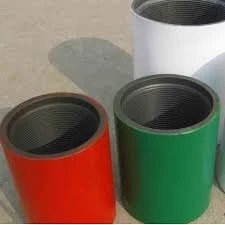- Afrikaans
- Albanian
- Amharic
- Arabic
- Armenian
- Azerbaijani
- Basque
- Belarusian
- Bengali
- Bosnian
- Bulgarian
- Catalan
- Cebuano
- Corsican
- Croatian
- Czech
- Danish
- Dutch
- English
- Esperanto
- Estonian
- Finnish
- French
- Frisian
- Galician
- Georgian
- German
- Greek
- Gujarati
- Haitian Creole
- hausa
- hawaiian
- Hebrew
- Hindi
- Miao
- Hungarian
- Icelandic
- igbo
- Indonesian
- irish
- Italian
- Japanese
- Javanese
- Kannada
- kazakh
- Khmer
- Rwandese
- Korean
- Kurdish
- Kyrgyz
- Lao
- Latin
- Latvian
- Lithuanian
- Luxembourgish
- Macedonian
- Malgashi
- Malay
- Malayalam
- Maltese
- Maori
- Marathi
- Mongolian
- Myanmar
- Nepali
- Norwegian
- Norwegian
- Occitan
- Pashto
- Persian
- Polish
- Portuguese
- Punjabi
- Romanian
- Russian
- Samoan
- Scottish Gaelic
- Serbian
- Sesotho
- Shona
- Sindhi
- Sinhala
- Slovak
- Slovenian
- Somali
- Spanish
- Sundanese
- Swahili
- Swedish
- Tagalog
- Tajik
- Tamil
- Tatar
- Telugu
- Thai
- Turkish
- Turkmen
- Ukrainian
- Urdu
- Uighur
- Uzbek
- Vietnamese
- Welsh
- Bantu
- Yiddish
- Yoruba
- Zulu
j55 coupling
Understanding J55 Coupling A Comprehensive Overview
In the world of oil and gas exploration, the reliability and integrity of all components within a drilling system is paramount. Among these essential components is the coupling, specifically the J55 coupling. This article delves into the significance of J55 couplings, their applications, characteristics, and advantages in the oil and gas industry.
What is J55 Coupling?
J55 refers to a specific grade of steel that conforms to the American Petroleum Institute (API) specifications, particularly API 5CT. The J55 specification is typically utilized in the production of casing pipes, which serve as a critical component in oil and gas wells. Couplings are connectors used to join two sections of pipe together, ensuring a tight and secure fit to withstand the extreme conditions of drilling operations.
Materials and Properties
J55 couplings are constructed from high-quality carbon steel, specifically designed to endure high pressure and temperatures encountered in subterranean environments. The chemical composition of J55 steel typically includes elements like manganese and phosphorus, enhancing its tensile strength and corrosion resistance. This durability makes J55 couplings suitable for various applications, particularly in medium-depth wells.
Applications of J55 Couplings
J55 couplings find extensive application in drilling operations, specifically within the casing and tubing segments of oil and gas wells. Their robust design allows them to accommodate various well conditions, from conventional to unconventional drilling environments. They are also commonly used in offshore drilling operations, where the challenges presented by saltwater and high-pressure settings demand exceptional material performance.
j55 coupling

Advantages of J55 Couplings
1. Strength and Durability One of the most significant advantages of J55 couplings is their high tensile strength. They are engineered to withstand the immense pressures and harsh conditions of downhole operations, reducing the risk of equipment failure.
2. Corrosion Resistance Due to the material properties of J55 steel, these couplings exhibit excellent resistance to corrosion, particularly in environments exposed to brine and other corrosive substances. This resistance extends the lifespan of the couplings and reduces maintenance costs.
3. Ease of Installation The design of J55 couplings allows for straightforward installation. Their compatibility with a wide range of casing and tubing sizes simplifies the connection process, reducing the time and effort required during drilling operations.
4. Cost-Effectiveness While J55 couplings offer superior durability and performance, they are also relatively cost-effective compared to other material grades. This balance of quality and price makes them a popular choice for numerous drilling programs.
Conclusion
In conclusion, J55 couplings are an integral component of drilling operations in the oil and gas industry. Their strength, durability, and resistance to corrosion make them an ideal choice for various applications, including casing and tubing in both onshore and offshore environments. The efficient and reliable performance of J55 couplings ensures that drilling operations can proceed safely and effectively, minimizing downtime and avoiding costly failures.
As the oil and gas sector continues to evolve, the demand for high-quality components like J55 couplings remains steadfast. By understanding their properties and advantages, industry professionals can make informed decisions when selecting the right couplings for their drilling needs. In an industry where every component's performance can be the difference between a successful operation and a significant loss, the importance of J55 couplings cannot be overstated.
-
Tubing Pup Joints: Essential Components for Oil and Gas OperationsNewsJul.10,2025
-
Pup Joints: Essential Components for Reliable Drilling OperationsNewsJul.10,2025
-
Pipe Couplings: Connecting Your World EfficientlyNewsJul.10,2025
-
Mastering Oilfield Operations with Quality Tubing and CasingNewsJul.10,2025
-
High-Quality Casing Couplings for Every NeedNewsJul.10,2025
-
Boost Your Drilling Efficiency with Premium Crossover Tools & Seating NipplesNewsJul.10,2025







